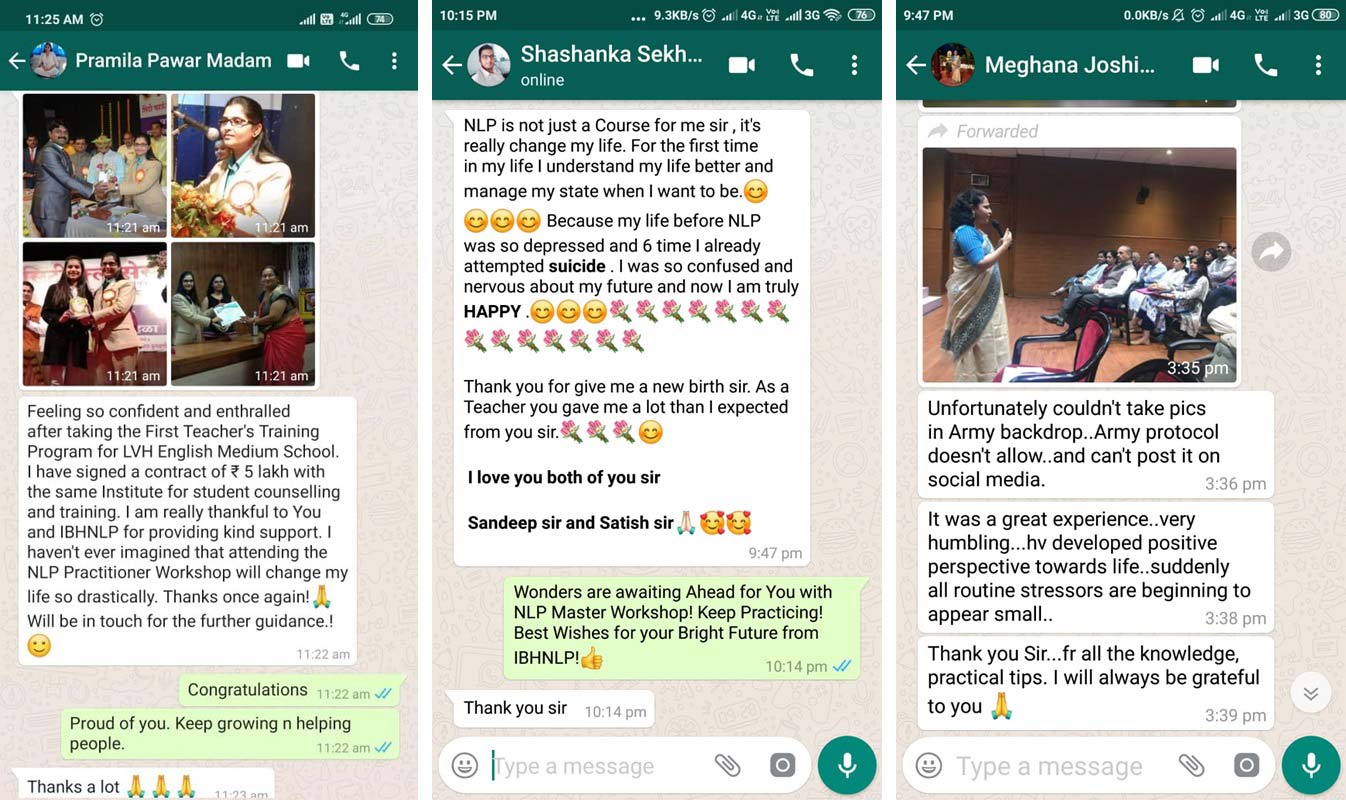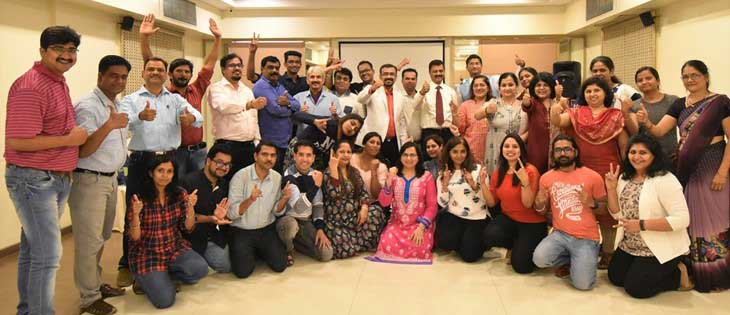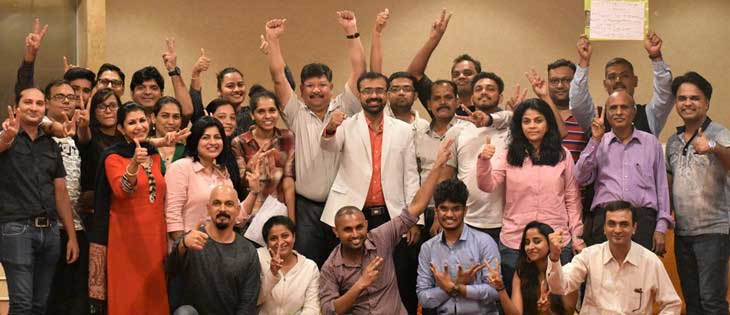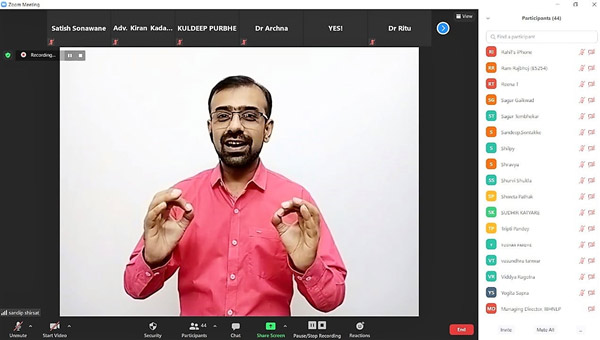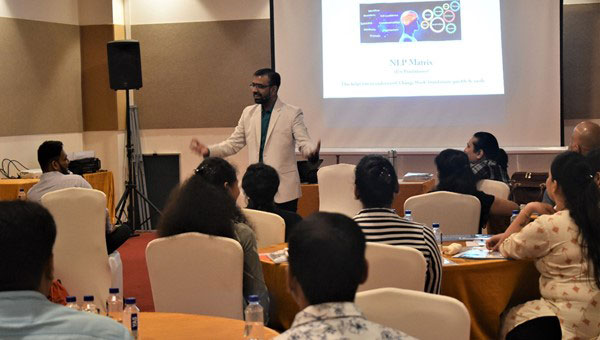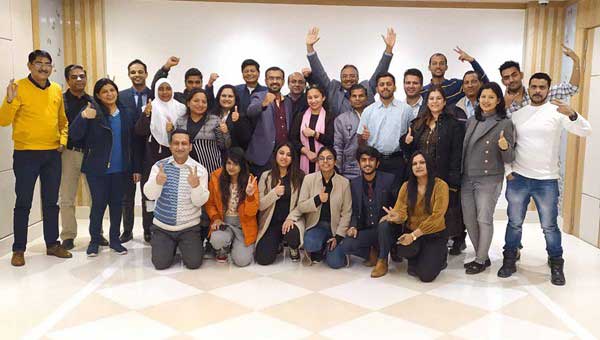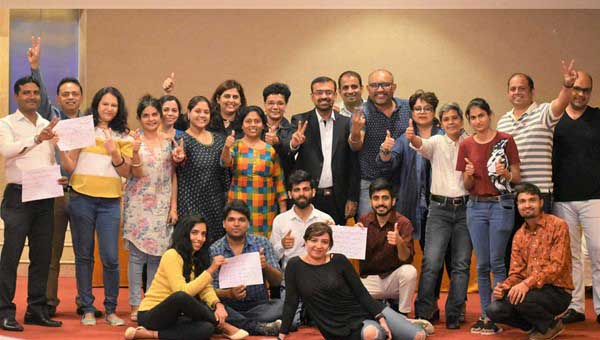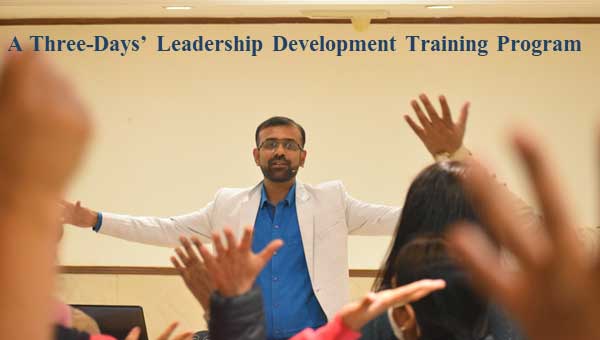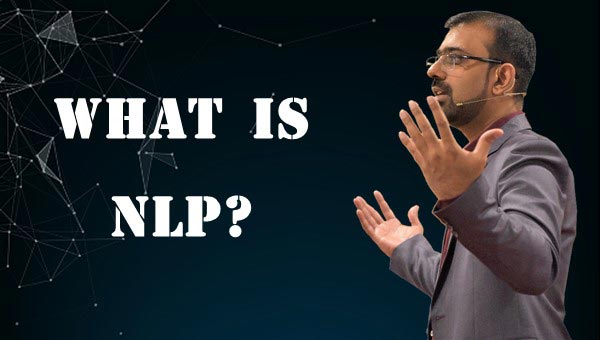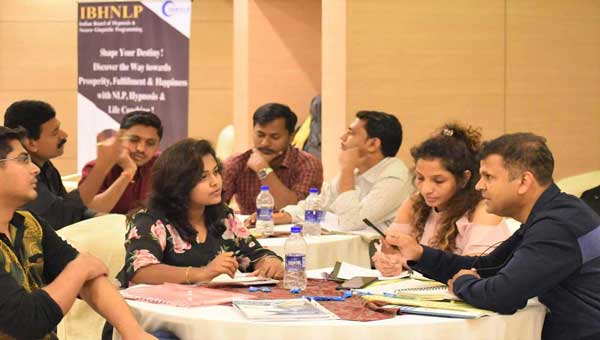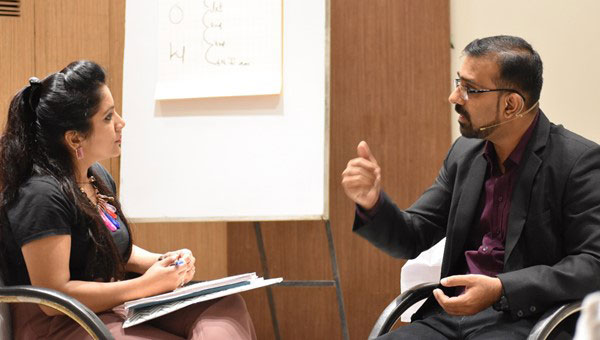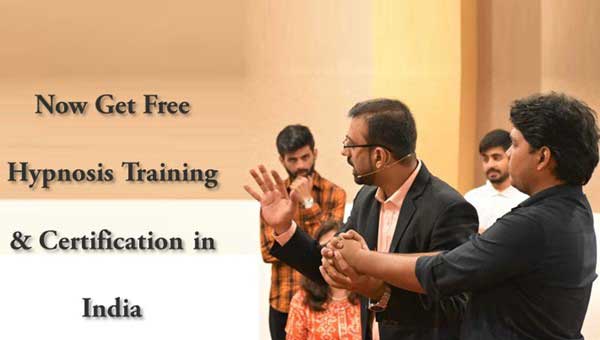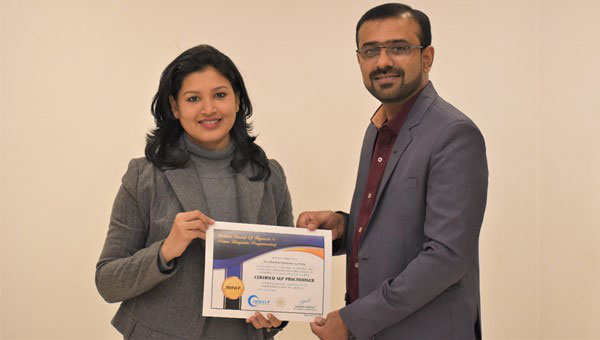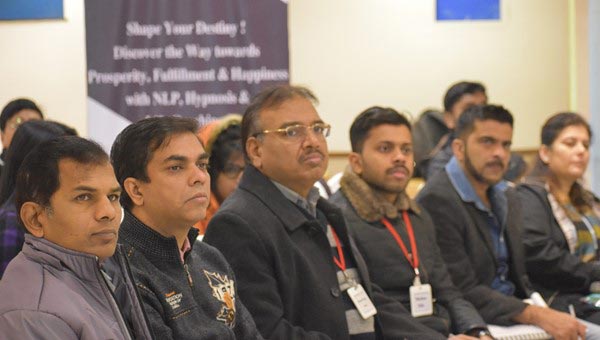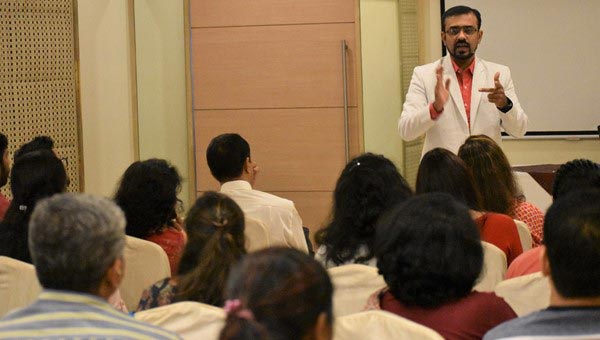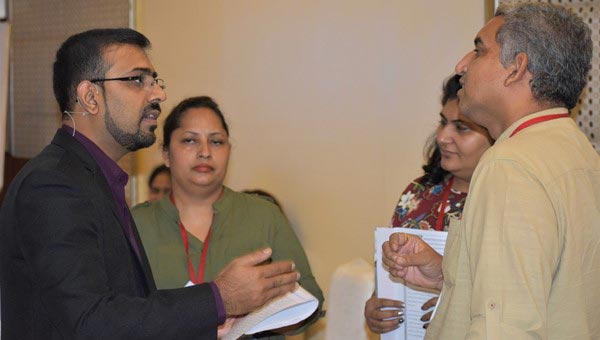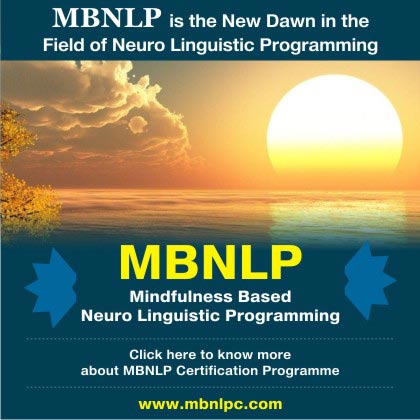Does NLP really work?
Instead of asking this question to me or anyone else, I would request you to experiment with the following exercise of NLP. This will give you a little sense of how NLP tools work.
Exercise - Change your negativity into positivity.
Here you are going to replace your negative thoughts with a positive one but in a specific way. Next two weeks whenever you feel bad about anything, stop and follow these five easy steps.
Step 1. Ask yourself: What are you feeling bad about? Look at the images and sounds that come to your mind. Remember every feeling is linked to certain internal images and sounds in mind. (There might be a single image, single sound or single image, no sound or no image, only sound etc.)
Step 2. Find out the intention of those images and sounds, because every emotion that arises in the mind has a specific intention or purpose behind it. Remember, negative emotions are the only signal that you must pay attention to.
What is the intention of those images and sounds?
Step 3. Think of all the solutions you can apply to stop this problem occurring. What actions can you take to solve the problem?
Step 4. Once you do this, repeat the first step and drain all the colours out of the image, shrink it and move it to distance. (You can do the same with multiple images.)
Step 5. Now imagine a new big, bright, vivid picture of the desired outcome, in which everything is going perfectly well. Step into that image. Experience that positivity.
Let’s understand the above steps with an example.
My client is feeling bad, negative and worried.
Step 1 – What are you feeling bad about? What images and sounds are coming to your mind?
Next week I have to give a presentation in front of the Board of Directors of our company. Thought of giving a presentation is making me feel bad and worried. This thought keeps coming in my mind. I can’t stop or control it.
What images and sounds come to your mind with this thought?
(Client thinks for a while, closes his eyes and does the search inside his mind.) I see myself on the stage, trembling, fearful and forgetting my content. I could see our board of directors are disappointed and frustrated due to poor presentation.
Step 2 – What is the intention of those images and sounds?
(Client starts pondering again. First, he doesn't find any intention then I as a coach help him to find the intention behind his negative emotions. Then he continues...) I think I need to prepare my presentation. I have not given concrete thought on it. I think I must sit for hours together and prepare an impressive presentation. I think I must prepare and practice.
Step 3 – What kind of actions can you take?
(Here we design an action plan to solve the issue.)
Talk to my boss.
Read some articles about the current business scenario.
Prepare a script.
Take help of Rashmi (client’s colleague) to prepare PPT
Rehearse my presentation, etc.
Step 4 – Repeat step 1 and then drain all the colours out of the image, shrink it and move it to distance. (Now, the client feels relaxed.)
Note: This process looks easy but you must learn different variations which are called ‘submodalities’ in NLP. It is one of the most important tools to change our internal representation. For example, the client says, his bad memory is related to the death of his beloved one. In this case, if you are working with the submodalities, you need to use completely different variations. To get mastery over submodalities and their different variations take a little time and efforts.
Step 5 – Now imagine a big, bright, vivid picture of that meeting, which is going perfectly well, the way you wanted it. Now, step into that image. (Client feels confident and eager to take action.)
Note: Here you need to find visual, auditory and kinaesthetic submodalities. With NLP sub-modality processes, we enhance positive feelings and put a client into the peak performance state. To make this positive state stable, 'anchoring' can be used after this process. (Anchoring is another powerful NLP tool.)
Now there may be a question:
What if this NLP technique doesn’t benefit me?
Does it mean, NLP is useless? Here are some points to be remembered before reaching any conclusion:
1. This exercise looks simple, but believe me it is not that simple. For some of us, it will be difficult to do this exercise for the first time, but at least you will get some sense of how NLP works. After this experiment, if you get only 1% result, still be happy because with proper training you will easily control your emotions and run your own brain.
2. This exercise might become challenging for extroverts. In my observation, finding out submodalities (visuals, auditory and kinaesthetic) will be difficult for extrovert people. Unfortunately, in today’s world, we are not trained to look inside, which might make this NLP exercise a little difficult.
3. Some of the NLP exercises might be challenging to do for the first time. Because most of us might not have done such activities earlier, like identifying visuals, auditory and kinaesthetic. So it might take a few attempts.
4. It is easy to work with an NLP coach initially because, if one variation of changing submodalities fails, he can use another variation instantly. Here, I have a limitation of explaining the whole process, so I can’t write about all the possible variations. The sub-modality process explained in the above activity might not work with someone, it only means there is a need to use another variation of the sub-modality process, that’s it.
5. You can start with the mild negative emotion initially. As you get master into identifying, controlling and directing submodalities, you can experiment on stronger negative emotions. The aim of this exercise is just to give you the taste of NLP.
6. It might look funny but at the same time true that a few people who deliberately want to show NLP doesn’t work. This technique won’t work with them.
7. Keep it in mind, most of the NLP tools and techniques are a subtle and little complex to understand and apply. So it's advised to undergo through proper training before applying NLP on yourself or with your client. Please, don't reach to the hasty conclusion. Let's see how NLP can transform your life!
Apart from sub-modalities, there are various models, tools and techniques available in NLP. If a specific tool doesn’t work with the client, NLP gives us the freedom to use another tool. The beautiful thing about NLP is: you never get stuck while working with a client or with yourself, you always have numerous options. You can use submodalities, you can go for the Meta Model, you can use anchoring, you can utilise the Milton Model and you can do several other things to produce desired results. This is the power of NLP! See some Feedbacks how does NLP really bring amazing changes in personal as well as professional life:
